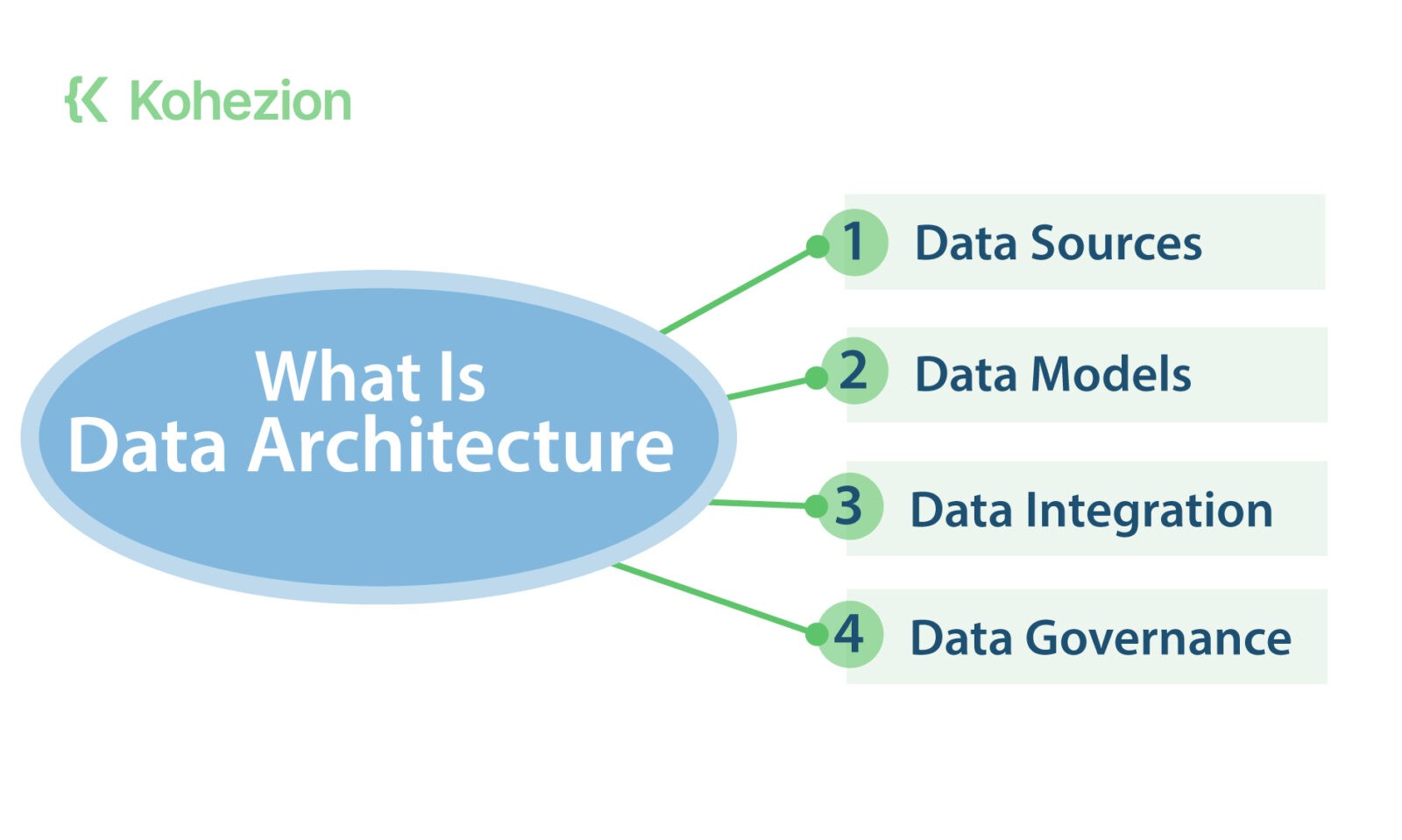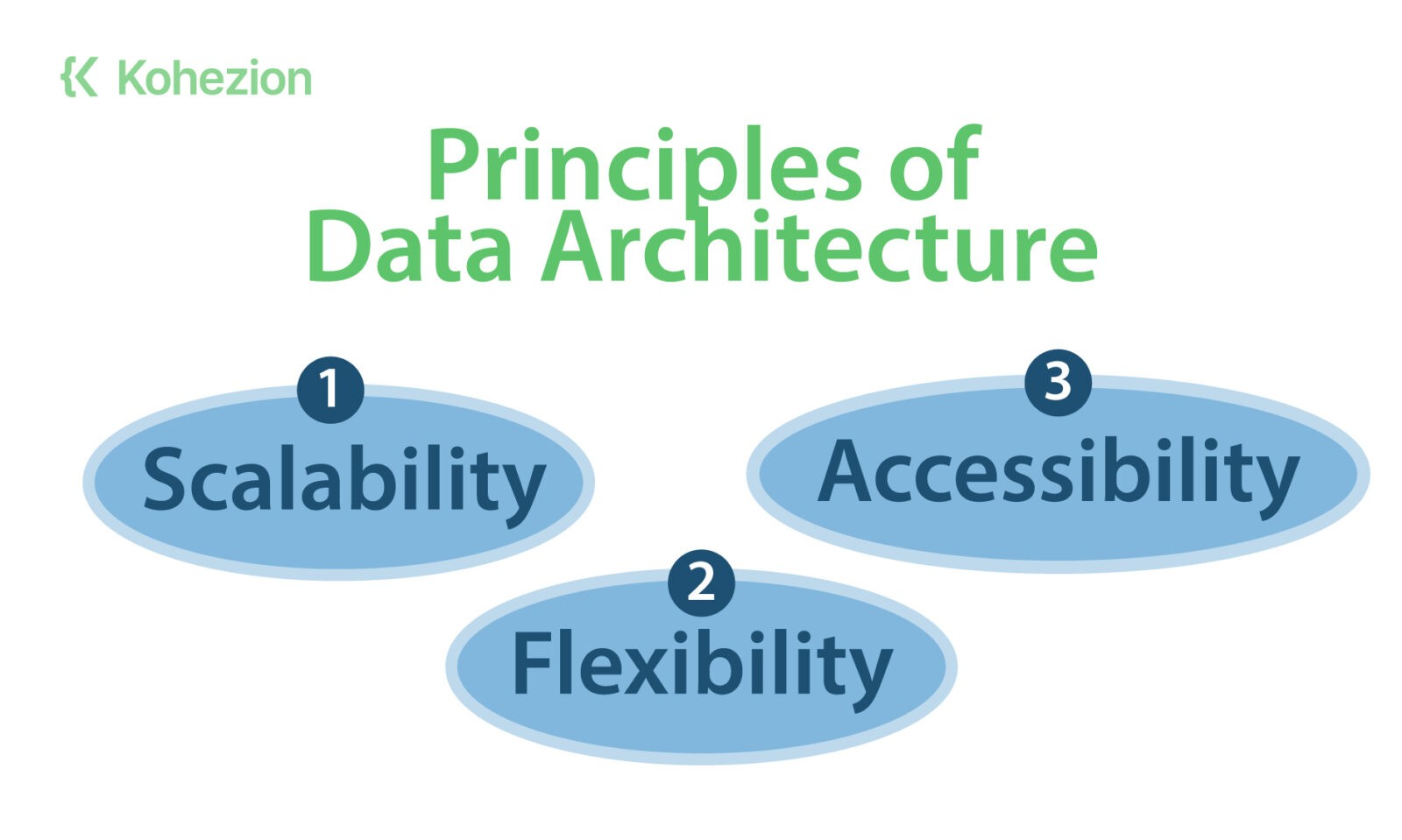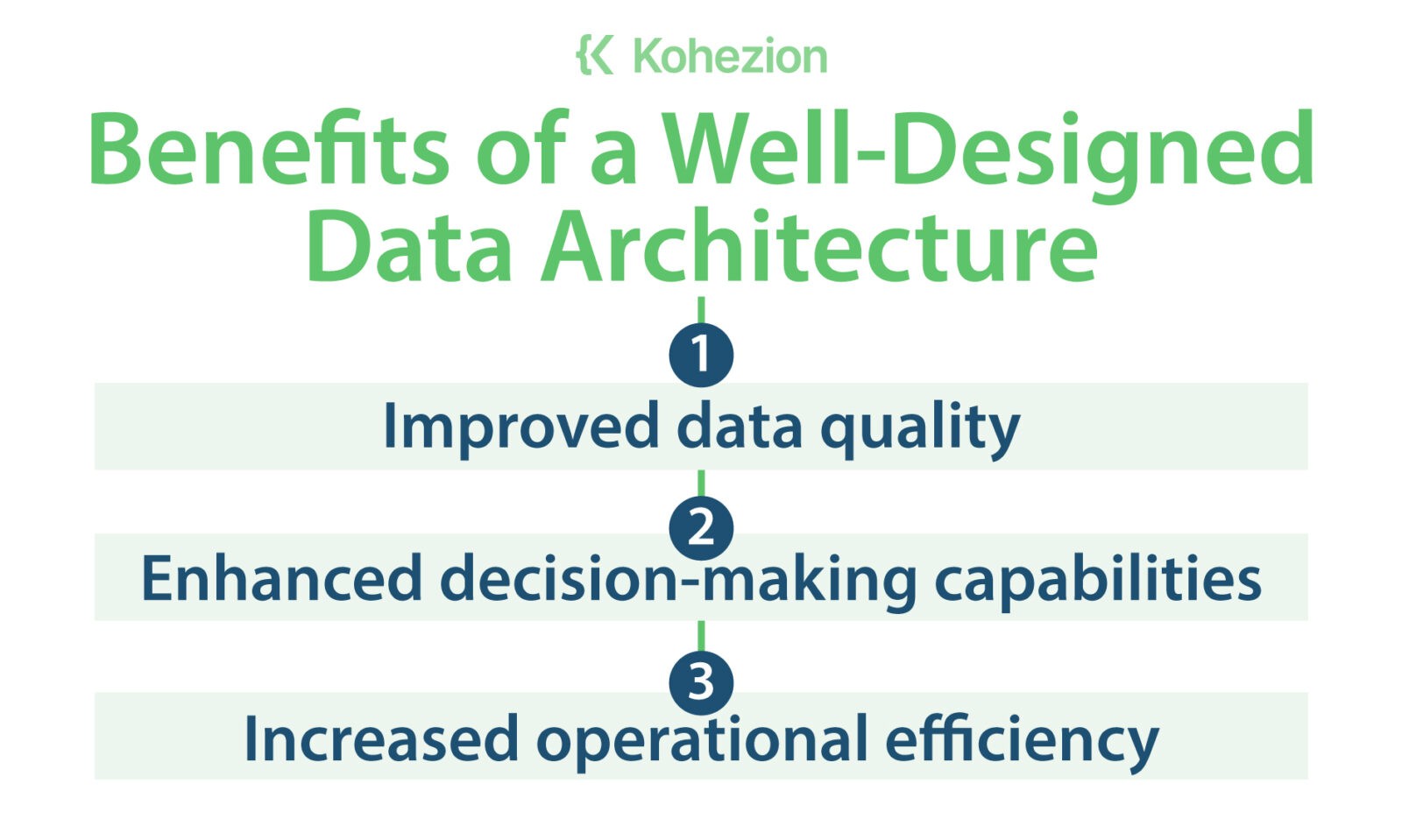What Is Data Architecture?
Data architecture can be regarded as the foundation upon which data are organized, managed, and utilized. That’s actually the overall structure and design of data assets, which includes everything from databases to data models to data integration processes, and data governance practices. It plays a crucial role in ensuring that data is accurate, accessible, and usable.

4 Components of Data Architecture
- Data Sources: Whether it be internal systems, external partners, or third-party providers, the various sources of data are identified and documented within an organization.
- Data Models: Data models are created to define the structure and relationships between different data entities. Those models serve as a blueprint for organizing and storing data.
- Data Integration: Also, data architecture encompasses the processes and technologies used to integrate data from different sources into a unified view.
- Data Governance: By means of data architecture, the governance framework for managing data is established. This includes data quality standards, data security protocols, and data privacy measures. It makes sure data are compliant with regulations while being aligned with the organization's data policies and standards as well.
Principles of Data Architecture
- Scalability: A well-designed data architecture is scalable, which allows organizations to handle growing volumes of data without compromising performance or data integrity.
- Flexibility: Make sure data architecture is flexible enough to accommodate different data types and formats, as well as evolving business needs.
- Accessibility: Data should be easily accessible to authorized users across the organization. When establishing data access controls, you make sure the right people have access to the right data at the right time.

Benefits of a Well-Designed Data Architecture
- Scalability: A well-designed data architecture is scalable, which allows organizations to handle growing volumes of data without compromising performance or data integrity.
- Flexibility: Make sure data architecture is flexible enough to accommodate different data types and formats, as well as evolving business needs.
- Accessibility: Data should be easily accessible to authorized users across the organization. When establishing data access controls, you make sure the right people have access to the right data at the right time.







